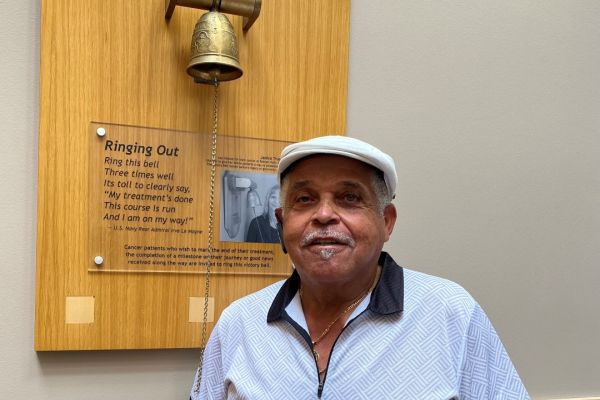Prostate cancer is the most common cancer among men. About one in every eight people assigned male at birth will receive a prostate cancer diagnosis during their lifetime. Most people who are diagnosed will not die from it, and many people with prostates can safely choose active surveillance instead of immediate treatment.
Early detection is important because it finds both slow-growing and aggressive cancers. And recent research suggests there may be advantages to adding magnetic resonance imaging (MRI) scans to early diagnostic standards, and surveillance, for prostate cancer – a change that may potentially reduce, avoid, or redirect the need for a prostate biopsy.
“Investigations have shown that, in some cases, certain kinds of MR imaging before a biopsy may help determine if the uncomfortable procedure is necessary,” says Ben P. McGreevy, MD, Assistant Professor of Oncology and Director of Diagnostic Imaging at Roswell Park Comprehensive Cancer Center.
How is prostate cancer currently diagnosed?
The prostate gland is located between the bladder and rectum. It is about the size of a walnut and produces a fluid that protects sperm. In general, medical professionals advise men and individuals assigned male at birth (AMAB) to begin talking with their doctor by age 45 about the benefits and risks of prostate cancer screening. With or without detectable symptoms, people at high risk – such as African Americans or those with a family history of prostate cancer – are encouraged to start these important conversations earlier, by age 40.
If your doctor or health care provider suspects prostate cancer, initial screening tests usually include:
- Digital Rectal Exam (DRE) – in which the doctor inserts a gloved, lubricated finger into the rectum to examine the prostate for abnormalities in the texture, shape or size of the gland.
- Prostate Specific Antigen (PSA) test – where blood is drawn and analyzed in a laboratory for PSA, a substance produced naturally by the prostate. If a higher than usual PSA level is found, it may indicate infection, inflammation, enlargement or cancer.
If the DRE and PSA testing detects an abnormality, your doctor may order the following additional tests to determine if you have prostate cancer:
- Ultrasound, which uses a small probe inserted into the rectum that generates sound waves to create a picture of the prostate gland.
- MRI scans to provide a more detailed image of your prostate gland than an ultrasound, which may help your doctor determine an individualized treatment plan, which may include a prostate biopsy.
A biopsy is medically considered the definitive way to confirm a diagnosis of most kinds of cancer. A prostate cancer biopsy involves inserting a thin needle into the prostate gland to remove a tiny piece of tissue to examine under a microscope for any cancerous cells. But medical providers are increasingly using magnetic resonance imaging to make more accurate recommendations for ordering a prostate biopsy, which can be uncomfortable and sometimes cause side effects.
MRI can help diagnose noncancer lesions that mimic cancer
“MR imaging can be helpful in certain instances of noncancer, such as benign prostatic hyperplasia (BPH) or prostatitis, which can mimic cancer by clinical presentation and labs. In the past, these patients might have undergone a random biopsy with risks of bleeding and infection. Now this diagnosis can be made with much better certainty,” Dr. McGreevy explains.
MRI screening is also useful in detecting and diagnosing suspicious prostate lesions that may be clinically significant prostate cancer, he adds. “Once lesions are recognized, magnetic resonance imaging is fused with ultrasound and used specifically to guide biopsy into these areas of concern. This significantly reduces the risk of nontarget biopsy due to under-sampling.”
MRI takes more time than a biopsy, but is painless
Prostate biopsies take only about 20 minutes and can be performed in a doctor’s office. However, recovery generally takes a few days, and you may need to take antibiotics for up to three days afterward to help prevent infections.
Typically, a prostate MRI screening takes about 45 minutes, is painless and requires no recovery time. “It’s a bit noisy,” says Dr. McGreevy, “but patients receive hearing protection.”
A special type of MRI scan called multiparametric MRI(mp-MRI), can provide a more detailed picture of the prostate gland than a standard MRI and has shown promising results in diagnosing and staging clinically significant prostate cancer.




